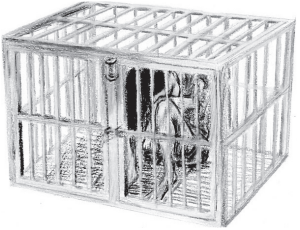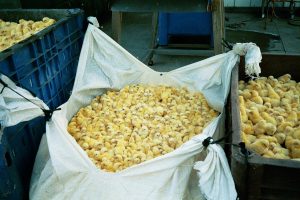Cultured meat paves the way for a more sustainable future
The concept of lab-grown meat has the potential to solve the global challenges associated with climate change and food production, yet the high cost and shortage of available technology still obstruct widespread implementation.
December 14, 2022
On Nov. 16, the U.S. Food and Drug Administration approved the first cultured meat product, lab-grown chicken produced by food technology company UPSIDE Foods. Faced with increasing concerns about the economic and environmental costs of industrially farmed meat, lab-grown meat has entered the spotlight as a potentially environmentally friendly and efficient mode of producing meat.
The concept of lab-grown meat revolves around extracting a small sample of cells from a living animal and cultivating these cells into a form of edible meat. In this way, cultured meat does not require the slaughtering of animals, addressing concerns of unethical practices in the meat industry. For instance, the treatment of cows in the industrial production of beef causes many to become sick and die in crammed, unsanitary feedlots.
“With industrialized meat production, we fatten these cattle up on a feedlot, which are very high density. There’s a lot of animal waste that does not get taken care of, and it gets out into the environment and causes all sorts of issues, like eutrophication,” DVHS AP Environmental Science teacher Heida Shaw explained. “And there’s a lot of disease, so they have to use a lot of antibiotics, which is where a lot of our antibiotic resistance comes from.”
Furthermore, cultured meat heavily cuts the land, water and resources required to raise livestock. Industrially farmed meat emits large quantities of greenhouse emissions and uses up large amounts of land and water: according to data collected by the Food and Agriculture Organization, livestock production accounts for nearly seven billion tons of greenhouse gas emissions per year, contributing to further climate change and global warming.
“There’s a huge carbon output from having those factory farms, because cattle release a lot of methane, contributing significantly to the greenhouse gases that are in our atmosphere,” Shaw said. “Long-term industrialized meat production is very detrimental to our environment, and it’s really something that we need to get a handle on. In the United States, we eat a tremendous amount of meat, and we waste a tremendous amount of the food that we produce. Anywhere between 30-40% of our food gets wasted, and if we’re putting in all this time, energy and carbon input, then it’s going to be really difficult to get out of that hole that we put ourselves into.”
Cultured meat could help mitigate this issue as an alternative to conventional farming methods; per an analysis conducted by Oxford University, cultured meat requires up to 45% less energy and 99% less land to produce, with up to 96% less greenhouse gas emissions. With these advantages, many are optimistic about the future of cultured meat production.
Yet one of the main concerns with lab-grown meat is the high economic cost and lack of easily accessible technology. According to Forbes, while the cost of cultured meat has decreased from several hundred thousand dollars per burger to roughly $10 per burger, its comparatively high price is still a considerable roadblock in the widespread adoption of cultured meat.
“Lab-grown meat is rather expensive to produce. Trying to replace regular meat, which billions of people eat, is going to be really difficult,” DVHS senior Casey Zhao noted. “It’ll require significant compromises.”
To this end, companies are still working towards reducing the price by increasing the scale of production, thereby increasing the accessibility of cultured meat. In addition to UPSIDE Foods, companies like GOOD Meat have also been developing cell-cultured meat; in 2020, GOOD Meat was granted approval by Singapore to market its cultured chicken nuggets.
However, another concern of lab-grown meat is its ability to replicate its industrially cultivated counterpart, which may affect its performance on the market.
“A major drawback is whether it is able to exactly replicate the taste of regular meat. For a lot of people, they’re willing to compromise on price if the taste can back up that price. But if the taste can’t back up the price, that’s a no-go,” Zhao added. “But if it’s affordable and tastes like regular meat, I have no problems buying it.”
Overall, while lab-grown meat does provide the capability of addressing some of the most pressing climate issues of industrial meat production, its feasibility, both economically and technologically, still remains under question.
“Right now it’s expensive, because any time you have a new technology, there’s a high upfront cost. There’s an upfront cost in terms of investment and in terms of producing the machinery that’s going to be needed to produce on a large scale,” Shaw said. “However, as it becomes more mainstream, that cost could dissipate as time goes on. As they ramp it up, if it becomes a successful product, the more they produce it, the less expensive it will become.”






